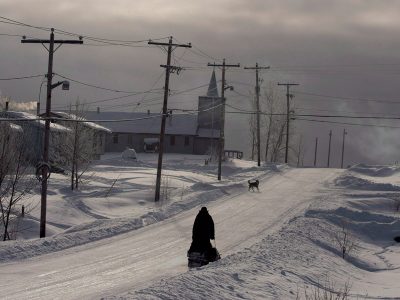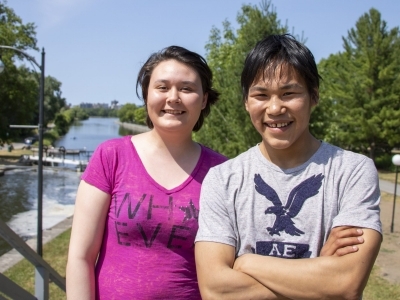By Brenna Mackay
Photos by Water and Ice Research Laboratory
The Milne Ice Shelf on the northwest coast of Nunavut’s Ellesmere Island has broken up, reducing in size by almost half and setting large ice islands adrift in the Arctic Ocean.
Ice shelves are thick, floating sheets of ice attached to the coast. The Milne Ice Shelf was the last remaining intact ice shelf in Canada’s North.
The initial break was discovered by Adrienne White, an ice analyst at the Canadian Ice Service, Environment and Climate Change Canada, who has worked on the Milne Ice Shelf in the past.
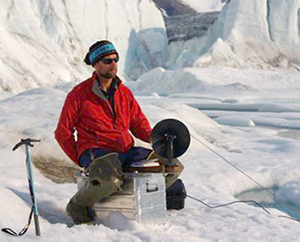
Prof. Derek Mueller
Carleton Geography Prof. Derek Mueller has visited the ice shelf 12 times since 2001 and was scheduled to visit again this summer before the trip was cancelled due to COVID-19.
Mueller is the co-director of the Water and Ice Research Laboratory (WIRL) alongside his colleague, Murray Richardson. The research is funded by the Natural Sciences and Engineering Research Council of Canada, the Polar Continental Shelf Program and ArcticNet and explores how climate change is impacting the melting of ice shelves. As they drill down into that question, they have discovered interesting features and processes that are occurring.
“Most people think of ice shelves as being completely sterile, but in fact, their presence creates several habitats for organisms,” explains Mueller.
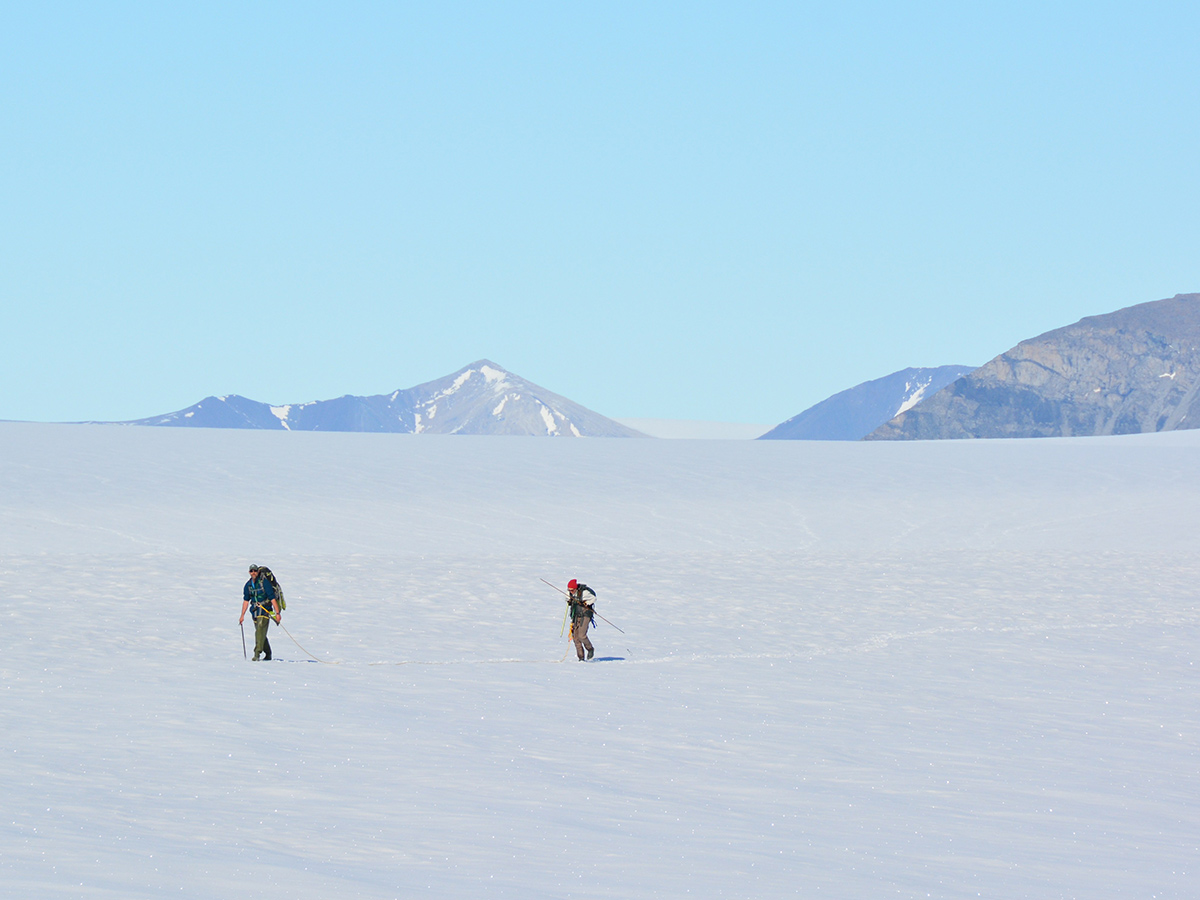
A closer look at ice shelves
An environmentalist at heart, Mueller grew up in Ottawa and began his academic career at the intersection of biology and geography. His interest in glaciology was piqued after writing his master’s thesis on the microbes living in melt holes on the surface of glaciers. His PhD then looked at life on the surface of ice shelves and he discovered the breakup of the Ward Hunt Ice Shelf on the north coast of Ellesmere Island, Nunavut.
Mueller began studying the Milne Ice Shelf because, at the time, it was one of the most intact shelves in the Canadian Arctic.
In 2008, the Canadian Rangers did an extended sovereignty patrol along the northern coast of Ellesmere Island. Seeing an opportunity, Mueller wrote to the Rangers asking if they would consider bringing scientists along with them in recognition of the International Polar Year, and they agreed.
“We were the first ‘embedded scientists’ in one of these patrols and it was a tremendous boon to our research,” he says.
Mueller and his colleagues were able to travel to the location by skidoo and see the land from the ground.
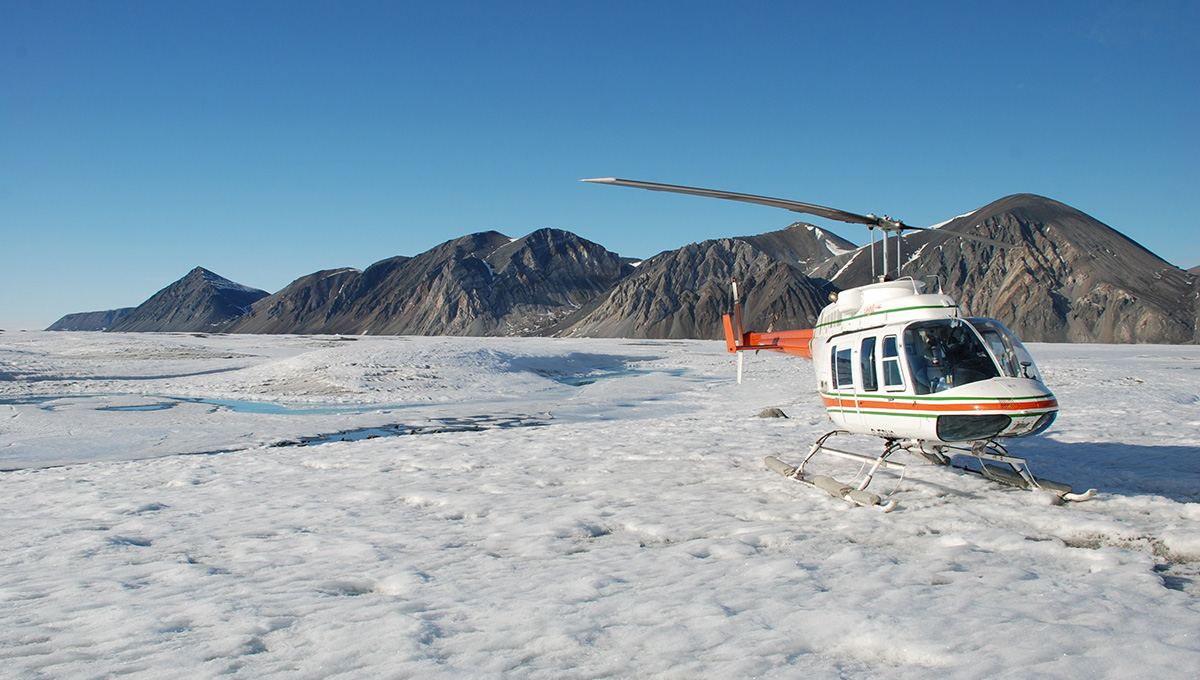
Why the Milne Ice Shelf?
What’s interesting about the Milne Ice Shelf in particular is a channel of flowing water that has carved its way into the underside of the ice.
Using a hole meter—a tool used to melt a small hole in the ice—the research team was able to place a robotic submarine into the channel and explore the hidden world underneath.
“We discovered a totally hidden community of bottom dwelling organisms—like scallops, sea anemone, and there’s even a fish down there—in the complete darkness.”
These creatures live off the sediment that’s scattered on horizontal sections of ice. Mueller’s team was able to observe the temperature and salinity of the water, and how fast the water was flowing.
“We don’t know how they got there or how long they’ve been there,” says Mueller. “But we do know that this particular location is drifting away in the Arctic Ocean right now so it’s no longer accessible.”
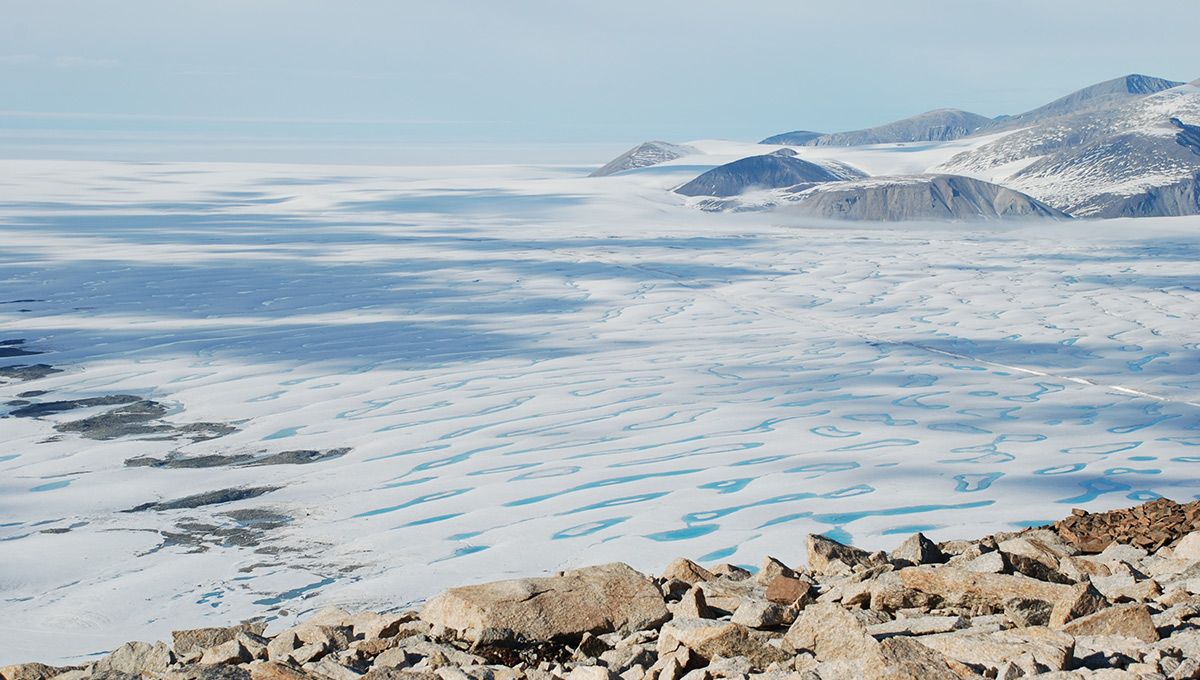
Milne Ice Shelf breaks away
The research team doesn’t know if this habitat is unique to this particular location, or if similar ecosystems exist elsewhere in Canada’s North. When a large portion of the ice shelf collapsed, Mueller and his team not only lost scientific equipment, but the potential focus of their study. Despite the setback, research continues.
“We’re there to study the transition between the way the Arctic was and what the Arctic will turn into,” he says. “Our job is to document this transition, and we’re still doing our jobs.
“The key is not just to sail through and say, ‘well it’s gone, so we’re out of here.’ It’s about asking what this is going to mean, what are the processes at play and how can we document and understand them better,” he says. “We’re on a continuum.”
Their research team hopes to conduct more studies on the remaining portion of the Milne Ice Shelf while they can.
“It’s not gone completely,” Mueller says. “But it will certainly break away at some point in the future.”
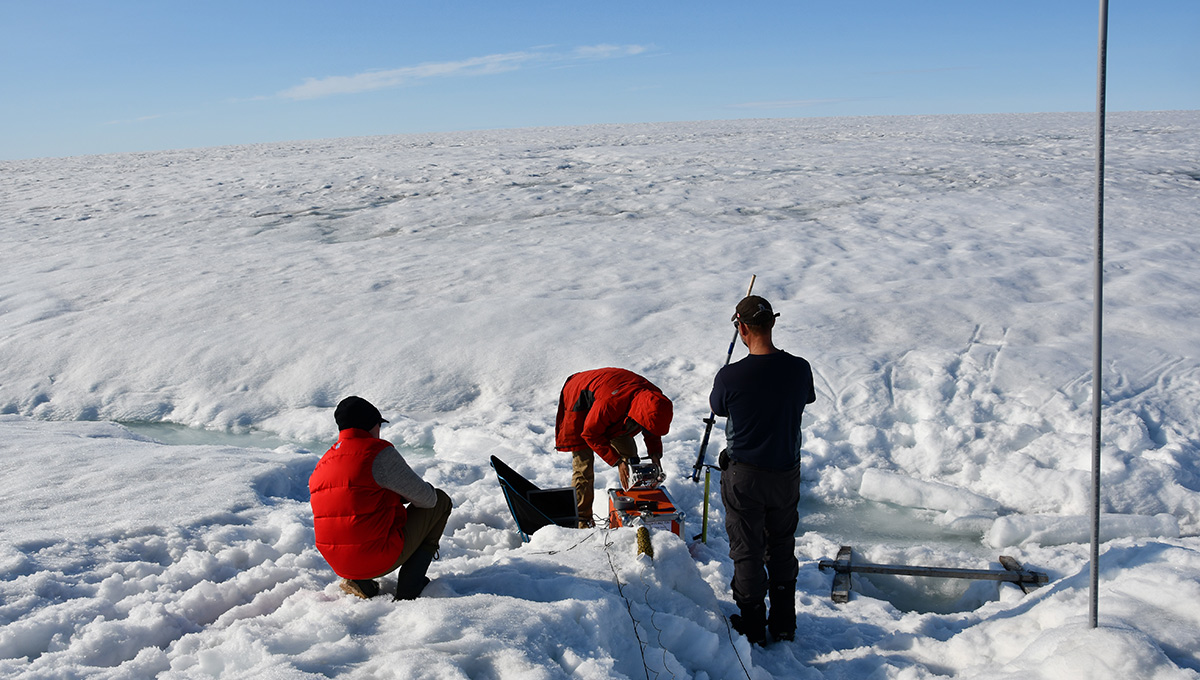
The environmental impact
Despite the unpredictable nature of studying ice shelves, Mueller knows that this is crucial work to understanding how climate change is impacting Canada’s North and the environment in general.
“It’s like a freight train,” he says. “Even if we all stopped emitting carbon as a society tomorrow, the climate would still continue to warm, because there’s that inertia.”
Scientists have been documenting the damage to infrastructure caused by climate change for years. Thawing permafrost has caused buildings and roads to collapse. Floating ice islands that break away from ice shelves could one day collide with ships or oil rigs.
While Mueller believes many Canadians do care about what is happening in the Arctic, climate change in the North can feel like a distant and far-off concern for the majority of Canadians that live within 100 km of the southern border.
“But what happens in the Arctic doesn’t necessarily stay in the Arctic,” says Mueller. “If we make changes now, then we can stop further change. We can mitigate the situation and ameliorate our future. Time is of the essence.”
Mueller says he feels very privileged to visit Canada’s North with his students, learn about what is happening and hopes that their research findings will inspire the political will needed to take action.
“This region is shaping our climate and we need to take care of it,” he says.
“As a northern nation, I hope that we care. There’s an ethical element to this too… Do we have the right to change our climate so that it causes unintended environmental damage, now that we know what we’re doing?”
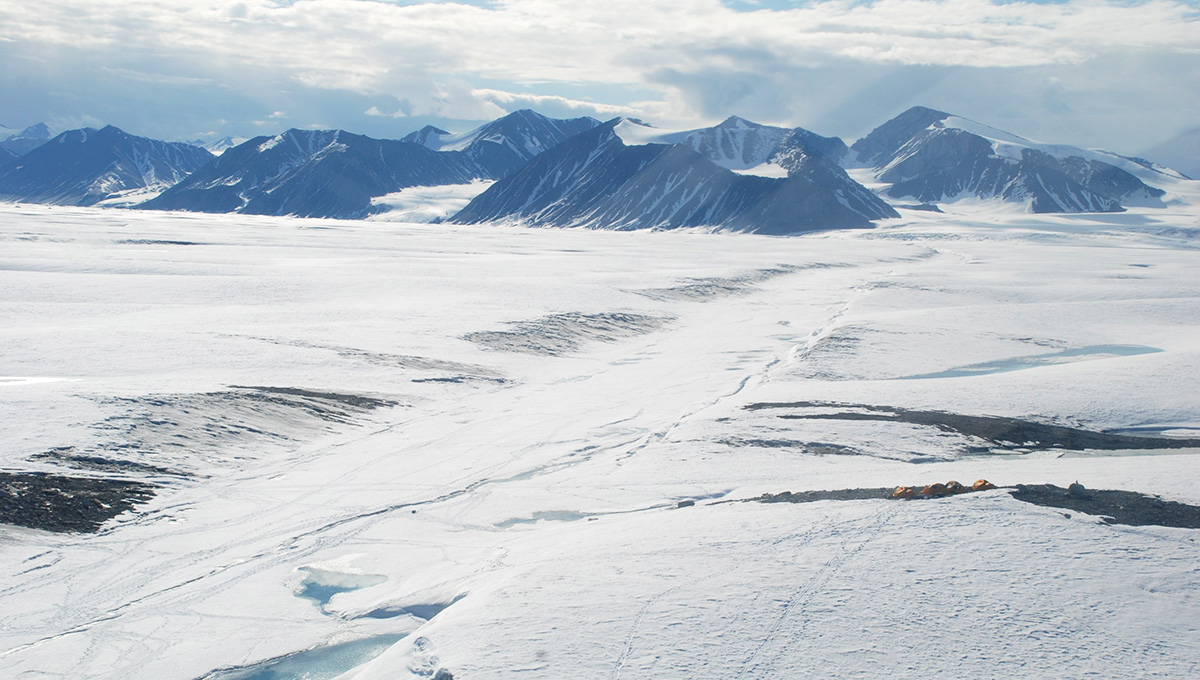
Thursday, August 27, 2020 in Environment and Sustainability, Geography
Share: Twitter, Facebook

